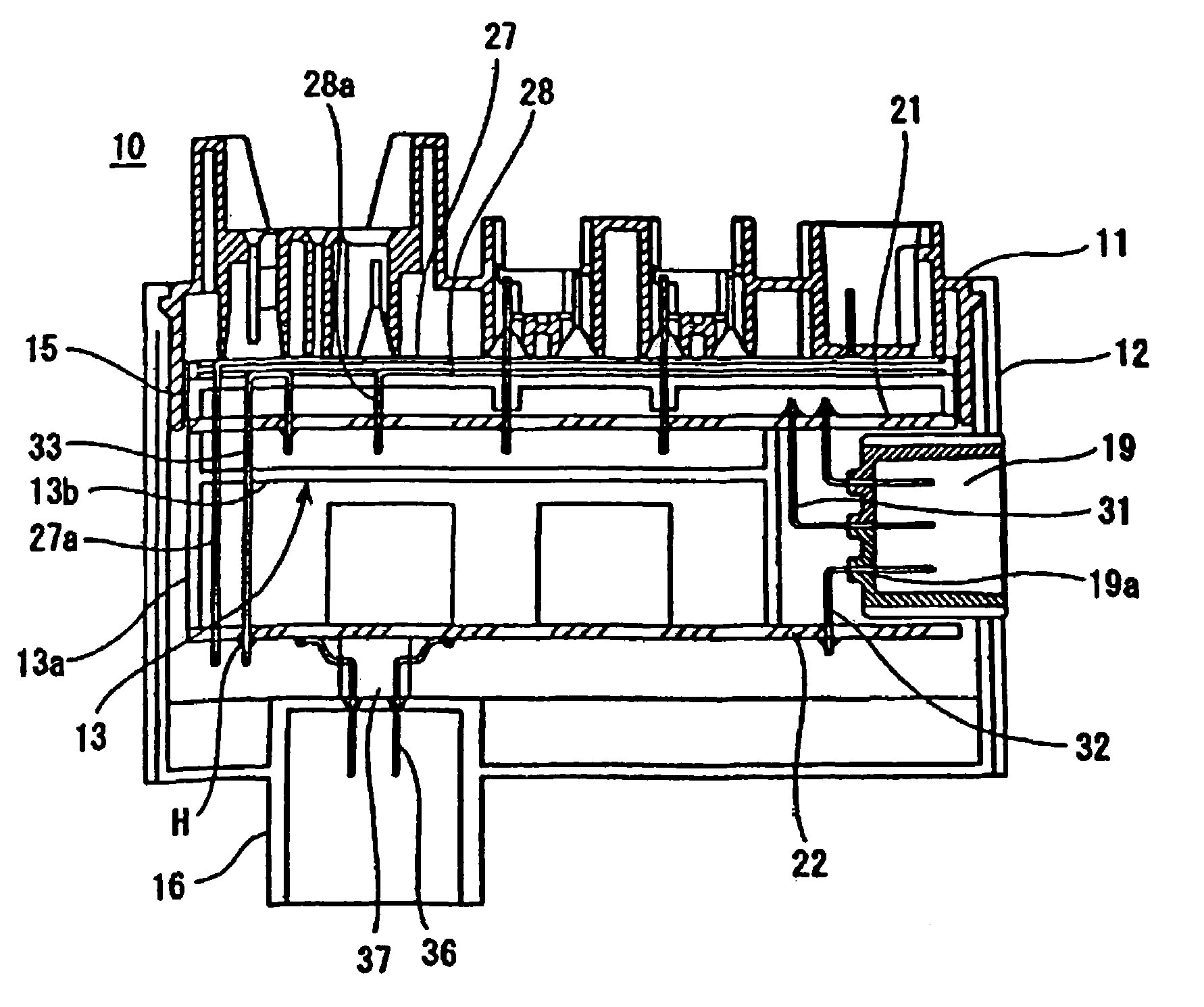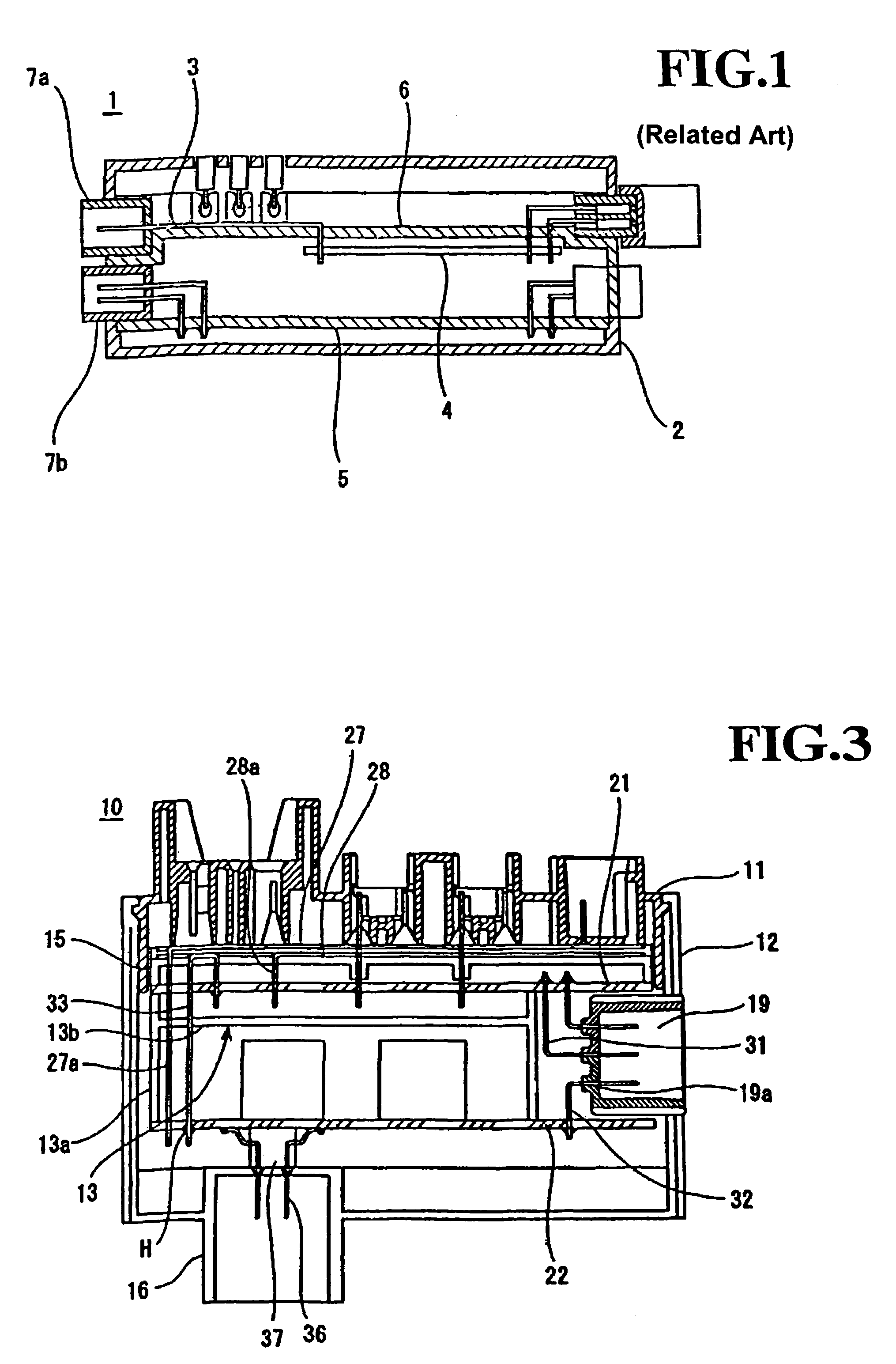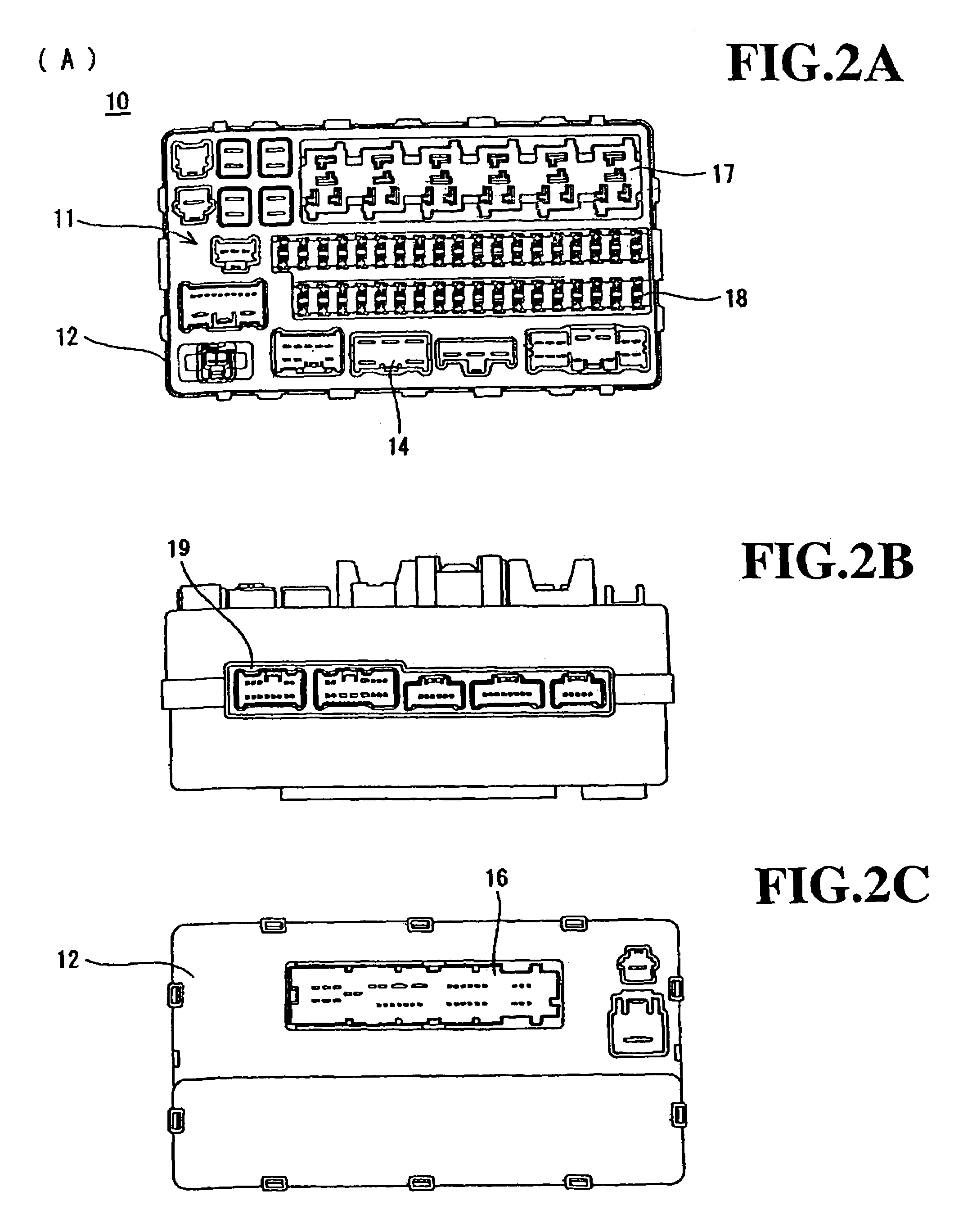Electrical connector housing having a bridging piece between circuit boards connected to a receiving unit
a technology of electrical connectors and bridging pieces, which is applied in the direction of electrical apparatus casings/cabinets/drawers, fixed connections, coupling device connections, etc., can solve the problems of increasing the number of parts required in the above configuration, increasing the conductor pattern, and increasing the number of layers of printed circuit boards. , to achieve the effect of simplifying the connecting operation, reducing the number of parts, and facilitating the arrangement of printed circuit board patterns
- Summary
- Abstract
- Description
- Claims
- Application Information
AI Technical Summary
Benefits of technology
Problems solved by technology
Method used
Image
Examples
Embodiment Construction
[0054]FIGS. 2 to 5 show an electrical connector housing 10 according to a first embodiment of the invention. This housing 10 is used to connect a wire harness for vehicles. It includes a first (e.g., upper) casing 11 and a second (e.g., lower) casing 12, and contains a first printed circuit board 21, a second printed circuit board 22 and busbars 27 and 28.
[0055]As shown in FIG. 3, the casings 11 and 12 contain a-board holder 13 that is formed of e.g., two flanges 13a, each with first and second ends (corresponding respectively to the upper and lower ends in FIG. 3), and e.g., a web plate 13b which bridges the two flanges 13a substantially halfway between the first and second ends. The first printed circuit board 21 is fixed on the first end of the flanges 13a, and the second printed circuit board 22 is fixed on the second end of the flanges 13a. A busbar-layer support casing 15 is provided above the first printed circuit board 21.
[0056]First and second busbars 27 and 28 are placed o...
PUM
 Login to View More
Login to View More Abstract
Description
Claims
Application Information
 Login to View More
Login to View More - R&D
- Intellectual Property
- Life Sciences
- Materials
- Tech Scout
- Unparalleled Data Quality
- Higher Quality Content
- 60% Fewer Hallucinations
Browse by: Latest US Patents, China's latest patents, Technical Efficacy Thesaurus, Application Domain, Technology Topic, Popular Technical Reports.
© 2025 PatSnap. All rights reserved.Legal|Privacy policy|Modern Slavery Act Transparency Statement|Sitemap|About US| Contact US: help@patsnap.com



